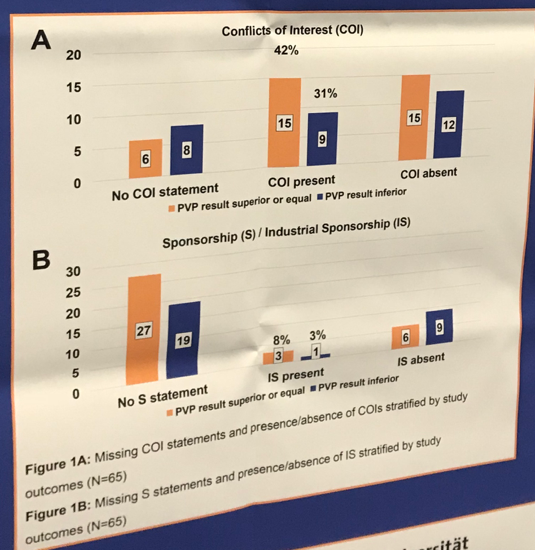To conduct her literature search for this study, Dr. Wettstein used the MEDLINE and EMBASE databases for articles published between January of 1990 and August of 2017. The studies regarding the PVP treatment modality that were collected in this literature search were then separated into randomized controlled trials (RCT) and non-randomized control trials (NRCT). Two reviewers independently screened each article to determine whether each study had IS present or no IS. If the PVP treatment was deemed to be favorable, the study would be stratified into the appropriate, superior cohort; if the study determined unfavorable PVP treatment, it was stratified into the inferior cohort. Descriptive statistics were used for data analysis.
At the time of the study’s completion, 286 articles were identified but 65 studies qualified for final analysis. The majority of these studies mentioned the absence/presence of potential COIs (n=51, 78%), however, an IS statement was only found in 29% of the studies. The study’s main data points are shown in the figure below.

Presented by Marian S. Wettstein, MD
Written by Zachary Valley, Department of Urology, University of California-Irvine, Twitter: @ZacharyAValley, at the 73rd Canadian Urological Association Annual Meeting - June 23 - 26, 2018 - Halifax, Nova Scotia


